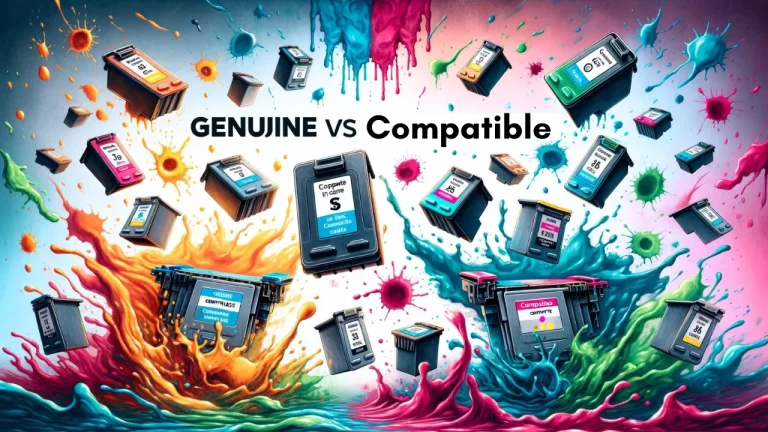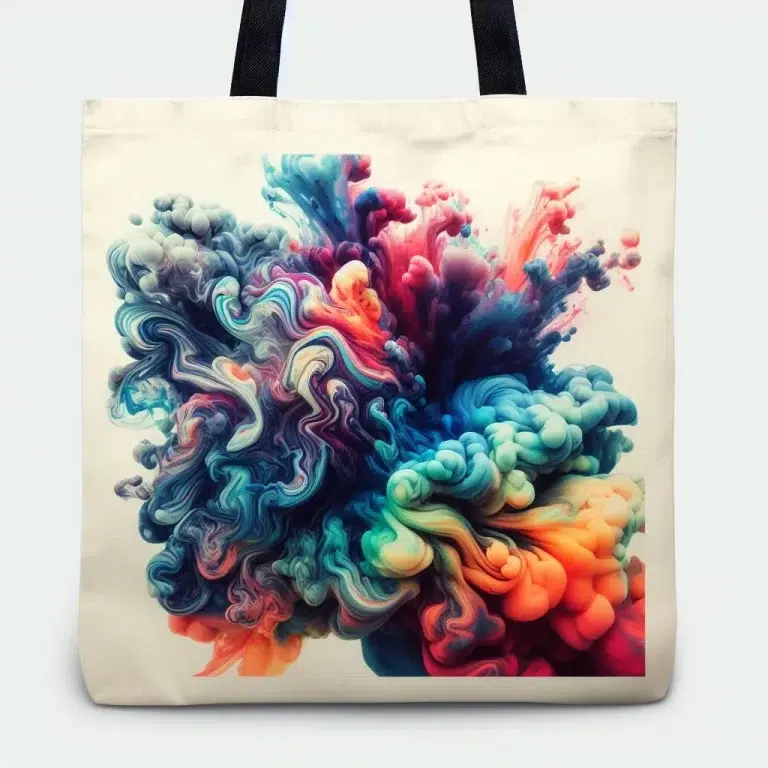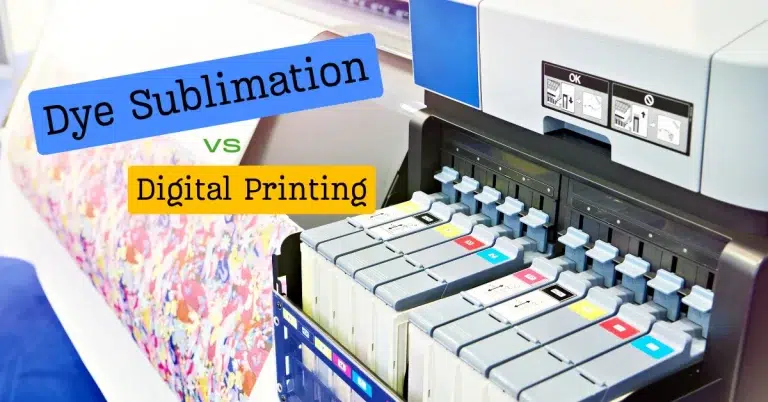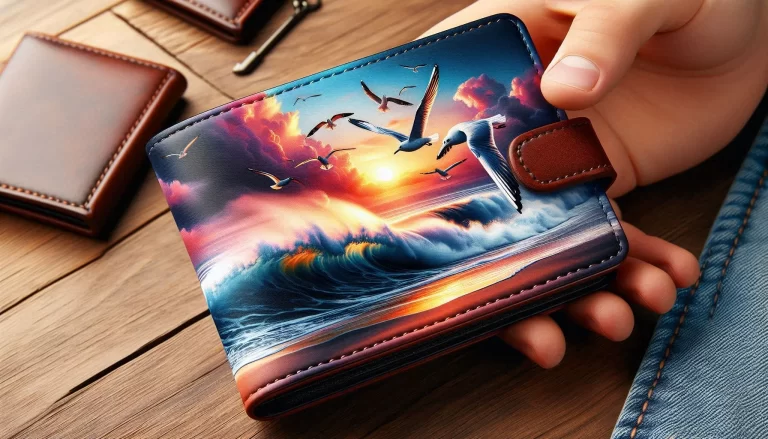Sublimation Paper: Brand, Issues & Master Quirky Projects (Even Toilet Paper)
Struggling to choose the right sublimation paper? Are you overwhelmed by brands, printer settings, or strange residue on your transfers? We get it.
Simplify things by comparing top brands (A-Sub, TexPrint, Cricut), fixing common issues (Epson settings, Cricut cuts), and finding budget-friendly suppliers while tackling quirky projects like glow-in-the-dark designs or, yes, toilet paper. Get clarity, save money, and execute your next sublimation project.
What Is Sublimation Paper?
Let’s cut to the chase: sublimation paper isn’t your average sheet of paper. It’s the unsung hero of vibrant, long-lasting designs on everything from mugs to t-shirts. But what exactly makes it so special?
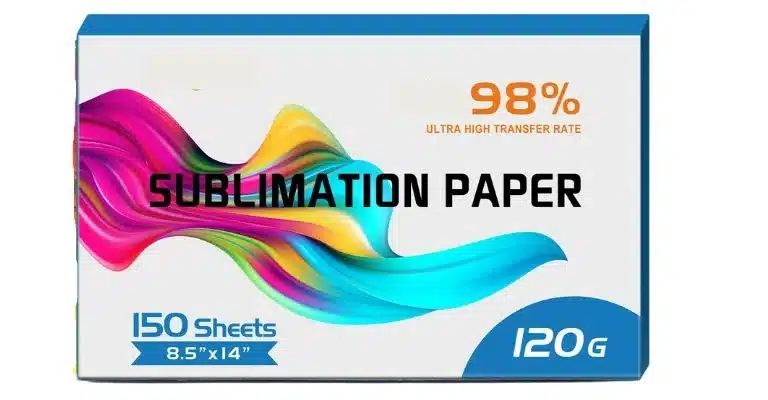
The Basics: How It Works
Sublimation paper is a transfer medium that was specifically created for dye-sublimation printing. The ink on the paper turns into a gas and bonds with polyester or polymer-coated surfaces when heat and pressure are applied, which is the scientific explanation. The result? Designs that are crisp and fade-resistant, not just slapped on top.
Think of it like this: regular printing puts ink on the surface, but sublimation printing becomes the surface.
What Can You Do with It?
Sublimation paper isn’t a one-trick pony. It’s your go-to for:
- Apparel: T-shirts, hoodies, and leggings (especially polyester blends).
- Home décor: Mugs, tumblers, and coasters.
- Custom gifts: Phone cases, keychains, and puzzles.
- Niche projects: Yes, even toilet paper (more on that later).
Fun fact: Over 70% of sublimation users say they love it for its ability to produce vibrant, photo-quality prints.
Why It’s Not Just “Regular Paper”
Here’s where things get tricky. Sublimation paper isn’t compatible with your everyday inkjet printer. Why? Two reasons:
- Ink Compatibility: Sublimation requires special dye-based inks that turn into gas under heat. Regular inkjet ink? It’ll just smear or burn.
- Coating: Sublimation paper has a unique coating that holds the ink in place during transfer. Without it, your design would bleed or fade.
Sublimation Paper vs. Heat Transfer Paper
Don’t mix these two up—they’re cousins, not twins.
| Feature | Sublimation Paper | Heat Transfer Paper |
|---|---|---|
| Material Compatibility | Polyester or polymer-coated items | Cotton, polyester, and blends |
| Feel | Smooth, part of the fabric | Slightly raised, like a sticker |
| Durability | Fade-resistant, long-lasting | May crack or peel over time |
In a nutshell: sublimation paper is for permanent, seamless designs, while heat transfer paper is better for quick, versatile projects. Check out Sublimation Paper Settings for Perfect Prints
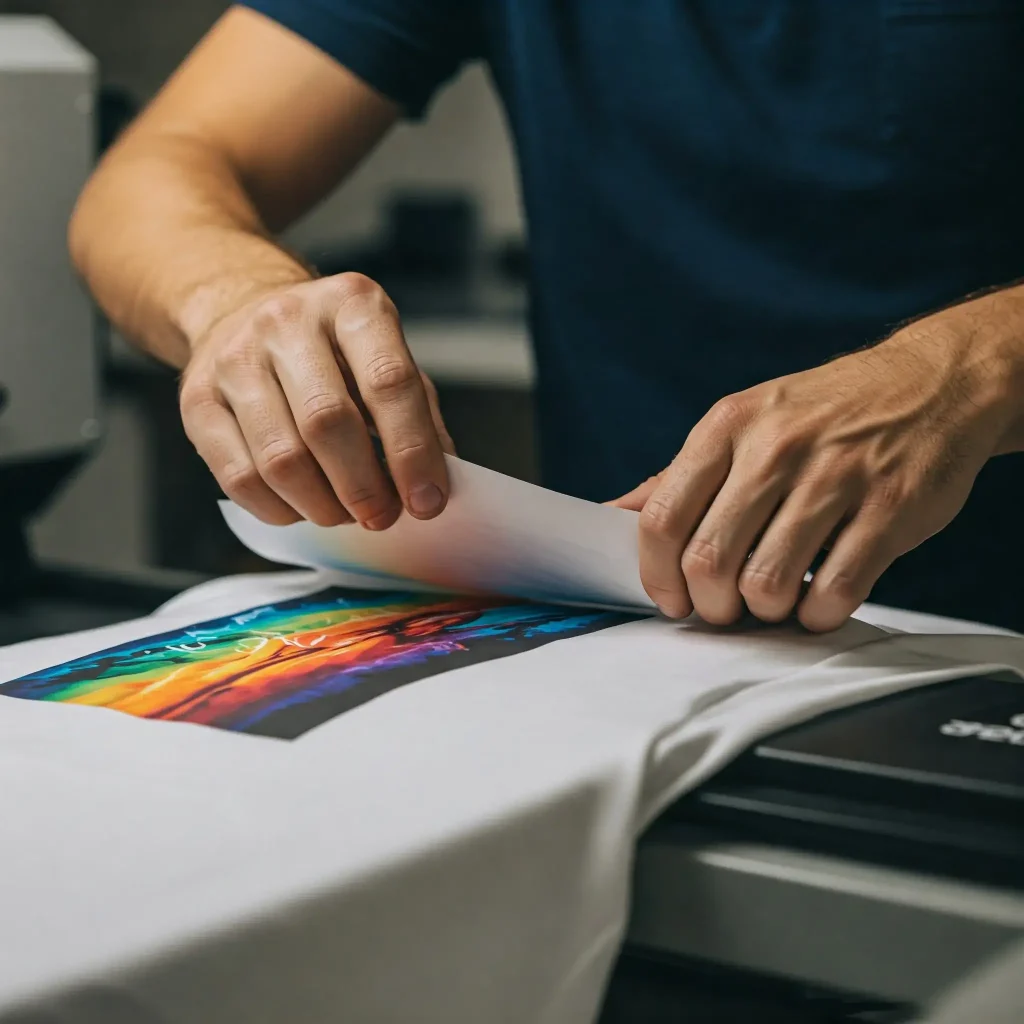
How to Choose the Perfect Sublimation Paper for Stunning Prints
Paper is a crucial component in creating vibrant and durable designs, whether it’s creating custom mugs for a hot tub gift shop or bold patio banners. How do you select the right one when there are so many options? To ensure your prints don’t curl or fade, this guide breaks down the key factors to consider, including ink capacity and humidity.
1. Understand Your Ink Needs: Capacity and Patterns
Why It Matters: The amount and type of ink you use can make or break your sublimation project. Heavy ink loads demand paper that can handle the moisture without warping or curling, especially for intricate designs.
What to Consider:
- High Ink Loads (Wet Ink): For projects with bold, saturated colors (e.g., a vibrant hot tub logo), choose thicker paper (110gsm or higher). Thinner papers may curl under the weight of heavy ink, ruining your transfer.
- Complex Designs: If your artwork mixes heavy and light ink (think a patio banner with gradients), low-weight papers (e.g., 80gsm) can shift or curl during pressing. Opt for 110gsm+ to keep everything crisp and stable.
Pro Tip: For hot tub coasters with detailed branding, test 120gsm paper to ensure sharp edges and no distortion.
2. Match Paper to Your Printing Setup: Roll vs. Sheet
Why It Matters: Your printing method—whether roll-to-roll or roll-to-sheet—affects paper choice, especially for high-volume projects.
What to Consider:
- Calendar Heat Presses (Roll-to-Roll): These prefer lightweight papers (80gsm) for smooth feeding. However, if you’re using heavy ink (e.g., for large patio flags), prioritize thicker paper to avoid warping.
- Roll-to-Sheet: For smaller, precise projects like custom mug transfers, thicker papers (100-120gsm) offer better control and durability during transfer.
Pro Tip: For patio signage projects, use 110gsm roll-to-roll paper to balance speed and quality in bulk production.
3. Speed Things Up: How Print Speed Affects Paper Choice
Why It Matters: The speed of your printer influences paper thickness and print quality, impacting efficiency and output.
What to Consider:
- Fast Printing: Ideal for lightweight papers (80gsm), which feed quickly and suit high-speed production (e.g., bulk t-shirts for a hot tub expo).
- Slow Printing: Better for thicker papers (110gsm+), which handle detailed, high-quality prints (e.g., custom patio cushions).
Pro Tip: If you’re new to sublimation, start with slower printing and 100gsm paper for beginner-friendly results.
4. Tackle Humidity: Keep Your Paper in Check
Why It Matters: Humidity in your workspace can cause paper to shrink, curl, or lose stiffness, leading to print issues. Choosing the right paper weight based on humidity ensures smooth printing and protects your equipment.
What to Consider:
- Low Humidity (<45%):
- Use softer, lightweight 80gsm paper to avoid “hunch-up” (when paper shrinks and curls, damaging the print head).
- Example: In dry climates, 80gsm works well for hot tub coasters, reducing wear on your printer.
- High Humidity (>70%):
- Opt for stiffer 110-120gsm paper to combat dampness, which softens paper and complicates smooth printing.
- Example: For patio banners in humid coastal areas, 120gsm ensures reliable transfers.
Pro Tip: Store sublimation paper in a cool, dry place with a dehumidifier to maintain quality, especially for outdoor projects.
5. Explore Sublimation Paper Uses: From Apparel to Patio Decor
Why It Matters: Sublimation paper’s versatility makes it perfect for countless projects, from personal crafts to business branding. Knowing its applications helps you choose paper suited to your substrate.
Key Applications:
- Apparel: Create stretchy sportswear (e.g., Lycra cycling gear), swimwear, or polyester t-shirts for hot tub staff uniforms.
- Home Decor: Design vibrant curtains, cushions, or table covers for patio settings, enhancing outdoor aesthetics.
- Advertising: Print bold flags, banners, or gaming table covers for hot tub showrooms or patio events.
- Hard Surfaces: Customize mugs, ceramic tiles, or aluminum signs for hot tub gift shops or patio branding.
How It Works:
- Printing: Use sublimation ink to print mirror-reversed images on paper via inkjet, flat, screen, or gravure printing.
- Transfer: Apply heat and pressure with a heat press to turn ink gaseous, bonding it to substrates like polyester, mugs, or banners.
- Comparison to Heat Transfer Paper:
- Sublimation paper uses sublimation ink for polyester and hard surfaces; heat transfer paper uses pigment or solvent ink for cotton.
Pro Tip: For outdoor patio signs, pair 110gsm sublimation paper with UV-resistant polyester to ensure longevity.
6. Troubleshooting Common Sublimation Paper Issues
Why It Matters: Even the best paper can lead to problems if not chosen correctly. Addressing these upfront builds trust and saves users time.
Common Issues and Fixes:
- Curling/Warping: Use 110gsm+ paper for heavy ink loads to prevent moisture-related distortion.
- Shifting During Pressing: Secure paper with heat-resistant tape or use sticky sublimation paper for complex designs.
- Print Head Damage in Low Humidity: Switch to 80gsm paper to reduce “hunch-up” and protect your printer.
- Poor Print Quality in High Humidity: Use 110-120gsm paper to maintain stiffness and ensure smooth feeding.
Test a small batch of sublimation paper with your printer and heat press settings before committing to a large patio project.
Quick Reference: Choosing Your Sublimation Paper
| Factor | Lightweight (80gsm) | Heavyweight (110-120gsm) |
| Ink Load | Low to medium ink; simple designs | High ink; complex, vibrant designs |
| Humidity | Best for <45% (dry climates) | Best for >70% (humid climates) |
| Print Speed | Fast printing; bulk production | Slow printing; high-quality prints |
| Applications | T-shirts, coasters, basic banners | Patio banners, mugs, detailed apparel |
| Best For | Beginners, small projects | Professional, large-scale, or outdoor items |
Why This Matters for Your Projects
Selection is not solely about avoiding headaches, it’s also about unlocking your creative potential. The right paper is essential for branding hot tub accessories or designing eye-catching patio decor, as it ensures vibrant, durable, and professional prints. Start with 100 games to achieve versatility and make adjustments based on your ink, printer, and environment.
Best Sublimation Paper Brands Compared
How do you know which brands actually deliver when there are so many that claim to be the ‘best’? Identifying the right brand for your project is crucial, whether it’s printing on tumblers, cotton blends, or glow-in-the-dark designs.
Top Contenders: TexPrint, A-Sub, and Hiipoo
These three are the heavyweights in the sublimation world, but they each have their strengths and quirks.
| Brand | Best For | Pros | Cons |
|---|---|---|---|
| TexPrint R | High-volume, professional use | – Exceptional color vibrancy | – Pricier than some competitors |
| – Minimal residue, great for tumblers | – Not ideal for beginners on a budget | ||
| A-Sub | Beginners & budget-conscious users | – Affordable, widely available | – Slightly less vibrant than premium brands |
| – Easy to use, great for small projects | – May leave faint residue on dark fabrics | ||
| Hiipoo | All-purpose, mid-range quality | – Balanced price and performance | – Limited size options |
| – Works well with most printers | – Not as durable for high-heat projects |
Specialty Picks: Glow-in-the-Dark & Vinyl Sticker Paper
Looking to add a little extra flair to your projects? These niche options have you covered:
- Glow-in-the-Dark Paper: Perfect for Halloween designs, kids’ apparel, or anything that needs a fun, luminous touch.
- Vinyl Sticker Paper: Ideal for creating durable, weather-resistant stickers for laptops, water bottles, or even car decals.
Budget vs. Premium: What’s the Difference?
| Category | Examples | Best Use Case |
|---|---|---|
| Budget | BS Tees, Blanks Galore | – Small projects, beginners, or testing ideas |
| – Great for learning without breaking the bank | ||
| Mid-Range | Hiipoo, Koala | – Everyday use for hobbyists and small businesses |
| – Reliable quality without the premium price | ||
| Premium | TexPrint R, Sawgrass TruePix | – Professional-grade results for high-volume work |
| – Perfect for intricate designs and tumblers |
Sawgrass TruePix: The Epson Favorite
If you’re using an Epson printer (such as the F170 or F570), Sawgrass True Pix is a great option. Consistent and vibrant results are produced due to its optimization for Sawgrass ink. Furthermore, it’s a lifesaver when it comes to avoiding jams and smudges.
Cricut Compatibility: Koala & Hippo
For Cricut users, Koala and Hippo sublimation papers are top picks. They’re easy to cut, don’t jam the machine, and produce clean edges for intricate designs. Check out Cricut Sublimation Transfer Paper
Printer & Machine Compatibility
It’s a fact that even the finest sublimation paper won’t work miracles if your printer or machine is not set up correctly. Getting the settings right is crucial for any device, whether it’s an Epson, a Cricut, or a generic inkjet.
Step-by-Step Setup for Printers
1. Epson Printers (F170, F570, 2803)
Epson printers are a favorite for sublimation, but they need a little TLC to perform at their best.
- Best Sublimation Paper: Sawgrass TruePix or TexPrint R.
- Printer Settings:
- Paper Type: Sublimation Paper or Premium Presentation Paper Matte.
- Print Quality: High or Best.
- Color Mode: CMYK (for accurate color matching).
- Loading Paper:
- Place the sublimation paper print side up in the tray.
- Adjust the paper guides to avoid skewing.
- For the Epson DS Transfer, use the rear feed for thicker paper.
Pro tip: Always do a test print on regular paper first to check alignment and color.
2. Inkjet Printers
Not all inkjet printers are created equal, but most can handle sublimation paper with the right settings.
- Best Sublimation Paper: A-Sub or Hiipoo.
- Printer Settings:
- Paper Type: Heavyweight Matte Paper or Sublimation Paper.
- Print Quality: High.
- Color Profile: Use the ICC profile provided by your ink manufacturer.
- Loading Paper:
- Load sheets one at a time to avoid jams.
- Ensure the print side is facing the correct direction (check your printer manual).
3. Laser Printers
Laser printers aren’t ideal for sublimation, but if you’re using one, stick to laser-compatible sublimation paper and follow these tips:
- Use a lower heat setting to prevent scorching.
- Avoid glossy finishes, as they can interfere with ink transfer.
Fixing “Sublimation Paper Sticking to Tumbler” Residue
Nothing’s worse than peeling off your transfer only to find a sticky mess. Here’s how to avoid it:
- Use High-Quality Paper: Cheap paper often leaves residue. Stick to trusted brands like TexPrint or A-Sub.
- Adjust Heat and Pressure:
- Heat: 380°F–400°F (193°C–204°C).
- Pressure: Medium to firm, but not crushing.
- Use a Teflon Sheet: Place it between the paper and the tumbler to prevent sticking.
- Peel Hot or Cold: Some papers work best when peeled hot, others when cooled. Check the manufacturer’s instructions.
Cricut Integration: Cutting Settings & Avoiding Jagged Edges
Pairing sublimation paper with a Cricut? Here’s how to get clean, precise cuts:
- Best Paper: Koala or Hippo (designed for cutting machines).
- Cricut Settings:
- Material: Lightweight Paper or Cardstock for Intricate Cuts.
- Pressure: Medium.
- Blade: Use a fine-point blade for detailed designs.
- Tips for Success:
- Use a strong grip mat to keep the paper in place.
- Avoid overloading the mat—cut one sheet at a time.
- If edges are jagged, reduce the speed and increase the pressure slightly.
Sublimation Paper Sizes & Formats
Picking the right size of sublimation paper is like choosing the perfect pair of shoes. Too big, and you’ll waste material; too small, and your design will be cut off.
Size Guide: What Works Best for Your Project?
| Size | Best For | Pro Tip |
|---|---|---|
| 13×19 inches | Large posters, full-shirt designs, or big tumblers | Ideal for Epson wide-format printers. |
| 8.5×47.2 inches | Roll-fed projects (mugs, water bottles) | Perfect for cutting custom lengths. |
| A4 (8.3×11.7 in) | Small crafts (keychains, stickers, phone cases) | Great for hobbyists and test runs. |
| 11×17 inches | Mid-sized items (tote bags, pillow covers) | Balances cost and coverage for small businesses. |
Tumbler Tip: For 20 oz tumblers, 8.5×47.2″ rolls let you print continuous designs without seams.
Bulk Buying: When to Go Big (and Where)
Buying in bulk saves cash, but only if you’re printing regularly. Here’s where to stock up:
- Wholesale Suppliers: Blanks Galore, Conde Systems, or Joto offer bulk packs (100+ sheets) at up to 40% off retail prices.
- Retailers: Hobby Lobby and Michaels carry smaller bulk packs (25–50 sheets) for casual crafters.
- Online: Amazon and Walmart sell budget-friendly bundles (like A-Sub’s 100-sheet pack) with Prime shipping.
Caution: Store unused paper in a cool, dry place to prevent coating degradation. Check out 75GSM Jumbo Rolls Sublimation Paper
A4 Sublimation Paper: Small but Mighty
Don’t underestimate the humble A4 sheet. It’s perfect for:
- Prototyping: Test designs before committing to larger sheets.
- Micro-businesses: Create stickers, greeting cards, or jewelry without overspending.
- International Users: A4 is the standard in Europe and Asia, making it easy to source locally.
Fixing Sublimation Paper Problems
Sublimation projects can run into trouble even with the best of intentions. Sticky residue, smudged ink, or wondering if you can just use parchment paper instead? Doesn’t sound familiar? Don’t sweat it.
1. Why Is My Sublimation Paper Leaving Residue?
Residue is the ultimate buzzkill. Here’s how to tackle it:
- Cause: Low-quality paper or incorrect heat settings.
- Fix:
- Use trusted brands like TexPrint or A-Sub.
- Adjust your heat press: 380°F–400°F (193°C–204°C) for 45–60 seconds.
- Add a Teflon sheet between the paper and your item to prevent sticking.
Pro tip: If residue still appears, try peeling the paper while it’s hot or cold (check your paper’s instructions).
2. Ink Smudging: How to Avoid a Mess
Smudged ink can ruin hours of work. Here’s how to keep your designs crisp:
- Cause: Overloading the printer or improper drying.
- Fix:
- Let the ink dry for 5–10 minutes before pressing.
- Avoid stacking prints—lay them flat in a dust-free area.
- Use high-quality sublimation ink and ensure your printer settings match the paper type.
3. How Long to Let Sublimation Paper Dry?
Drying times can make or break your transfer. Here’s the scoop:
- Standard Drying Time: 5–10 minutes at room temperature.
- Humid Environments: Extend drying to 15–20 minutes or use a fan to speed things up.
- Pro Tip: If you’re in a rush, a heat gun on low can help—just don’t overdo it!
4. Can You Use Parchment Paper Instead?
In a pinch, parchment paper might seem like a good substitute, but it’s not ideal. Here’s why:
| Substitute | Pros | Cons |
|---|---|---|
| Parchment Paper | – Cheap and readily available | – Doesn’t hold ink well, leading to smudges |
| – Works as a protective layer during pressing | – Not designed for high heat or pressure | |
| DTF Paper | – Great for cotton fabrics | – Requires special DTF powder and printer |
| – Produces vibrant, durable designs | – More expensive than sublimation paper |
Verdict: Stick to sublimation paper for best results, but keep parchment on hand as a protective layer during pressing.
Niche Uses & Creative Projects
Do you think sublimation is only for a t-shirts and mugs? Think again. Sublimation paper can turn even the most eccentric ideas into reality, from glow-in-the-dark designs to toilet paper. Ready to push the limits? Let’s get started on some serious, fun, and slightly unconventional projects.
1. Sublimation Toilet Paper Designs
Yes, you read that right. Toilet paper sublimation is a thing, and it’s as hilarious as it sounds.
How to Do It:
- Design: Create a fun, lighthearted pattern (think jokes, memes, or seasonal themes).
- Print: Use sublimation paper and ink.
- Press: Set your heat press to 350°F (177°C) for 30 seconds.
- Peel: Carefully remove the paper to reveal your design.
Safety Tip: Use only unused, clean toilet paper and avoid pressing too hard—it’s delicate!
2. Glow-in-the-Dark Sublimation Paper
Add a little magic to your projects with glow-in-the-dark designs. Perfect for kids’ apparel, party decorations, or spooky Halloween gear.
How to Do It:
- Choose the Right Paper: Brands like Glowforge or Koala offer glow-in-the-dark sublimation paper.
- Design: Use bold, high-contrast patterns for maximum glow effect.
- Press: Follow the manufacturer’s heat and time guidelines (usually 380°F for 45 seconds).
- Charge: Expose the design to light for a few minutes to activate the glow.
Pro Tip: Test your design in a dark room before finalizing—it’s worth the extra step!
3. Sublimating on Paper Bags & Napkins
Want to elevate your party favors or branding? Sublimation works on paper bags and napkins, too.
How to Do It:
- Prep: Use polymer-coated paper bags or napkins (plain paper won’t work).
- Design: Keep it simple—small logos or monograms work best.
- Press: Set your heat press to 350°F (177°C) for 20–30 seconds.
- Peel: Gently remove the paper to reveal your design.
Safety Tip: Avoid overheating, as paper can scorch easily.
4. Other Quirky Ideas
- Sublimated Napkins: Perfect for weddings, birthdays, or corporate events.
- Paper Coasters: Create custom designs for gifts or home décor.
- Gift Tags: Add a personal touch to presents with sublimated tags.
Safety Tips for Non-Traditional Materials
- Test First: Always do a test run to avoid wasting materials.
- Low Heat: Use lower temperatures for delicate items like paper or fabric blends.
- Ventilation: Work in a well-ventilated area, especially when pressing unusual materials.
If you’re ready to take your sublimation projects to the next level, Subli Genius Print has the tools, tips, and premium sublimation paper to help you create stunning, professional-quality designs.
FAQs
References:
Wikipedia contributors. (2023). Dye-sublimation printing. Wikipedia. Retrieved from https://en.wikipedia.org/wiki/Dye-sublimation_printing
Got questions? Our expert team is here to help—reach out and let’s make your vision a reality. Your genius print starts here! 🚀
